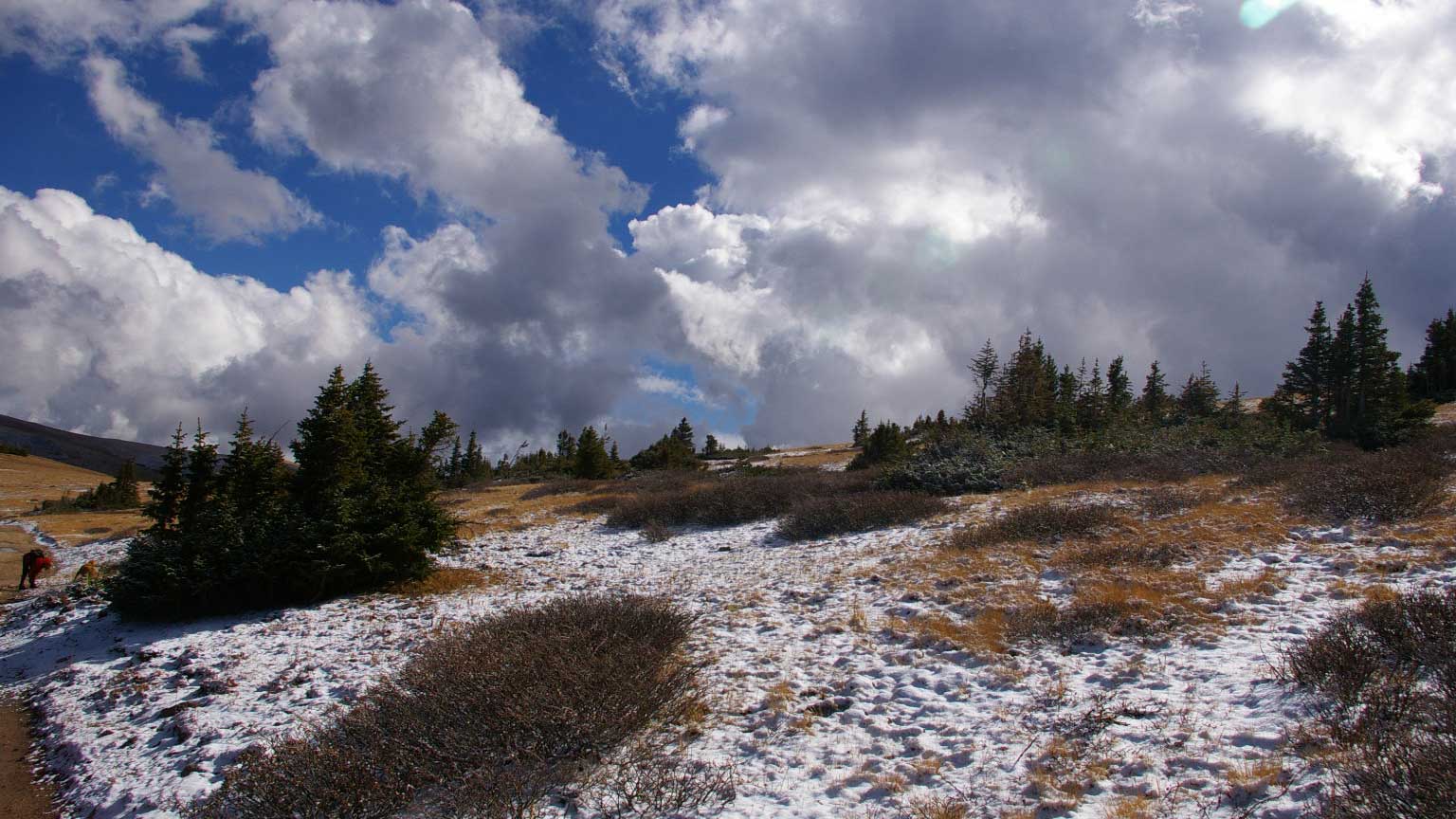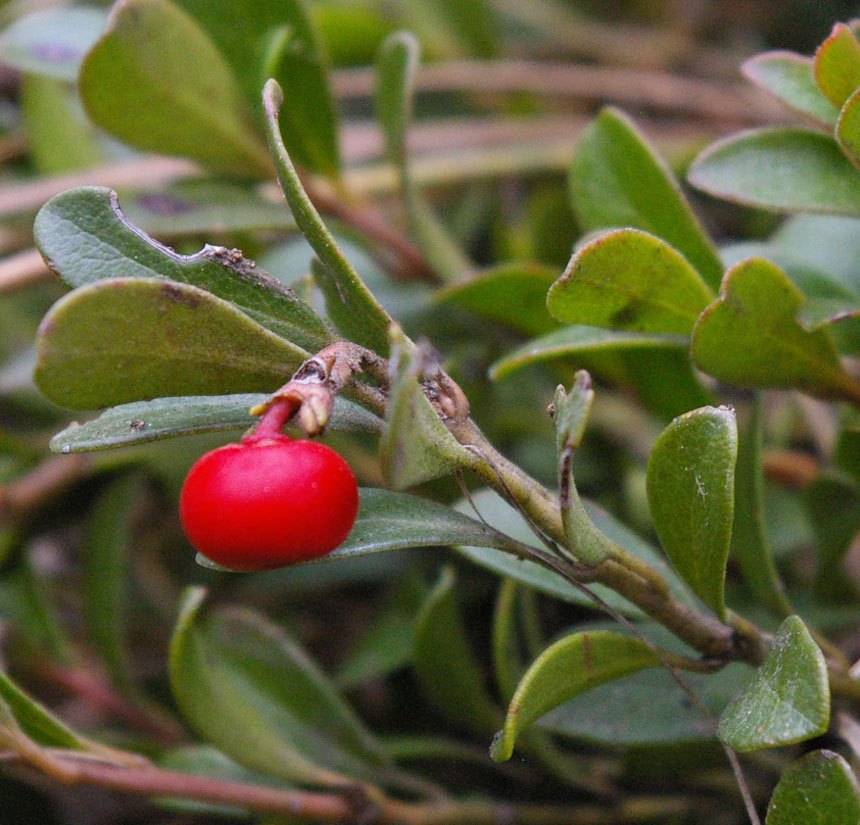Subalpine Dry-Mesic Spruce-Fir Forest and Woodland
Georgia Pass, Park County
Spruce-Fir Forests
Spruce-fir forests consisting of Engelmann spruce (Picea engelmannii) and subalpine fir (Abies lasiocarpa) are one of the most extensive forest types in Colorado, covering 4.6 million acres and 19% of forests in the state. They are often the highest elevation forest types and occur in the subalpine zone from about 8,000 to treeline from 9,300 to 11,000 feet. The subalpine zone is cold year-round with most of the precipitation occurring as snow which may persist well into the summer. Winter snowpacks are deep and summers are cool with frost possible throughout the season.
Although these forests are dominated by Engelmann spruce and subalpine fir, other tree species often occur with them. These include Douglas fir (Pseudotsuga menziesii), and lodgepole pine (Pinus contorta) which may be mixed with quaking aspen (Populus tremuloides), limbur pine (Pinus flexilis) and bristlecone pine (Pinus aristata).
At the very top of the subalpine treeline, these forests may extend into the alpine as “tree islands” or “ribbon forests” as seen in the photo above. These forests occur within a mosaic of of open alpine meadows and they are controlled by snow disposition and wind-blown ice. These extreme conditions often bend the trees into a krummholtz form where they appear contorted by the wind and ice. Krummholtz comes from the German word meaning bent, twisted or crooked. The tops and windward side of the trees are laid bare by fierce winds, snow and ice, and the trees grow mostly on the down-wind side of the trunk (creating a form called, “flag trees”), at the base of the tree, or behind rocks where they are protected.
Engelmann spruce and subalpine fir are supremely adapted to the harsh conditions of the subalpine. Engelmann spruce is the largest of the two species, growing an average of 90 feet tall with trunk diameters of 30 inches. It is a very slow-growing tree taking 150 years to reach its maximum height and lives as long as 500 years.
Characteristic Plants
Click on photo to see full-page lightbox image.
In lightbox, click on X in upper right corner to return here.
Subalpine fir is not quite so long-lived as Engelmann spruce, rarely living for more than 300 years, but it grows almost as tall. Both trees have foliage almost to the ground, maximizing photosynthesis, and both have a pyramidal shape, so they can shed the snow. Both trees are also shade tolerant and can germinate and grow under an existing tree canopy. The result is that these forests are quite thick and dark and have little understory of shrubs and herbs.
Although alpine firs do not live as long as Engelmann spruce, the ratio of both species is maintained because alpine fir grows more readily from seed and also grows better in shade than does spruce, although the fir has a higher mortality rate. In a spruce-fir forest, you will find many more alpine fir seedlings in the understory than spruce seedlings. Also subalpine fir can regenerate from “layering”. When the snow presses the lower branches against the ground, the limb can resprout where it touches the soil.
One of the major disturbances in the spruce-fir forest is fire. Under natural conditions, these have occurred on the average of every 300 years, although this interval may become shorter due to climate change. Neither of the two species are adapted to fire. Both have thin bark and the presence of dead lower branches allows fire to climb easily into the crowns, killing the trees. So most fires are stand-replacing events.
It takes 300-400 years for the spruce-fir forest to regenerate. Often, this regeneration starts with the establishment other species, more adapted to fire, such as lodgepole pine and aspen. Since both Engelmann spruce and subalpine fir are shade tolerant, they readily regenerate under the canopy of these species and over a long period of time replace them as the climax forest system.
Because these forests are so thick and dark, the understory is sparse. The plants that live there are well adapted to shady conditions and include such species as common juniper (Juniperus communis), Twinflower (Linnaea borealis), Oregon grape (Berberis repens) and dwarf red whortleberry (Vaccinium scoparium).
– Mo Ewing

